Services
Our Services & Solutions
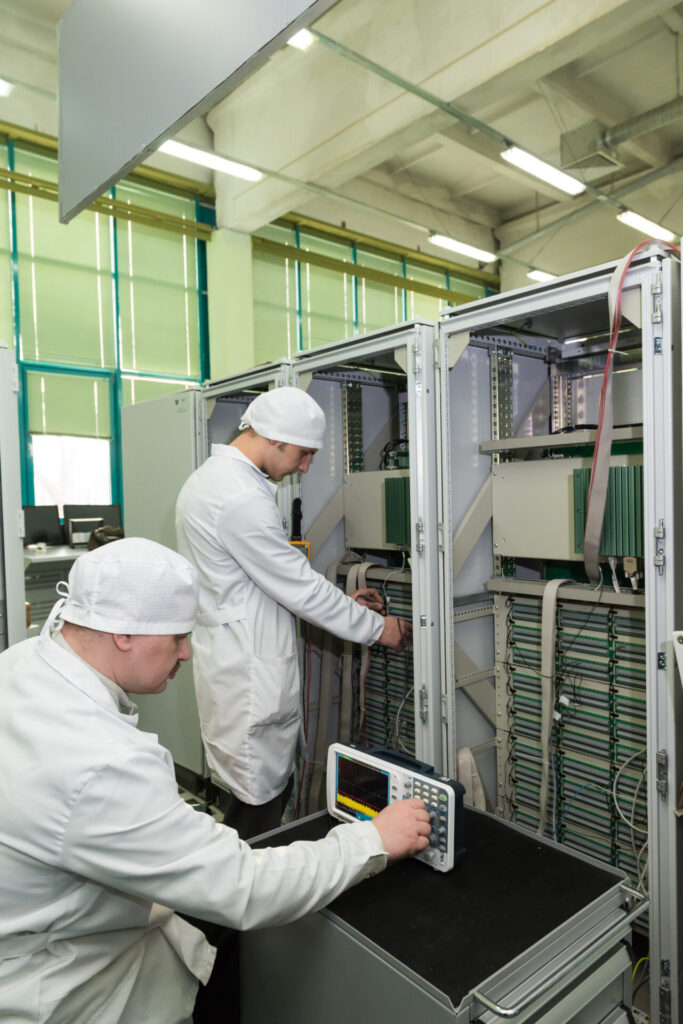
SCADA & DCS System Configuration and Commissioning.
SCADA Configuration
- Architecture Design: Define the network topology, including servers, clients, PLCs, RTUs, and communication protocols.
- Tag Database Setup: Configure data points (tags) for monitoring and control.
- HMI Development: Design graphical interfaces for operators to visualize and interact with the system.
- Alarm Management: Set up alarm thresholds, priorities, and notification mechanisms.
- Historical Data Logging: Configure data archiving for trends and reports
- Security Settings: Implement user roles, access controls, and cybersecurity measures.
DCS Configuration
- Control Strategy Design: Develop control loops, logic, and interlocks.
- I/O Configuration: Map physical inputs/outputs to software tags.
- Function Block Programming: Use predefined blocks for PID control, sequencing, etc.
- Redundancy Setup: Configure redundant controllers and networks for high availability
- Integration: Connect with field instruments, drives, and other subsystems.
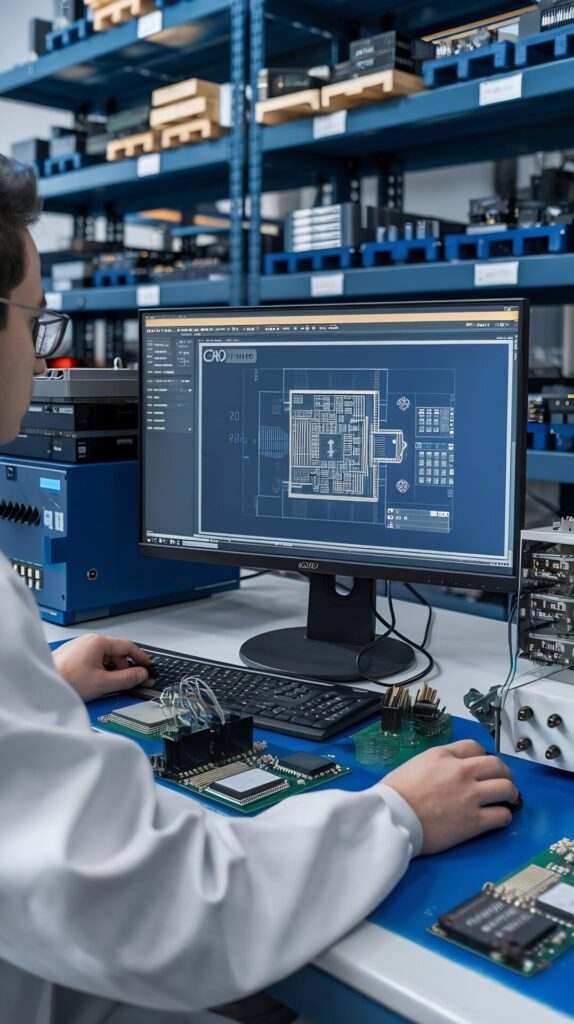
PLC SYSTEM PROGRAMMING AND COMMISSIONING
- PLC Programming refers to the process of designing and writing the control logic that governs how a Programmable Logic Controller (PLC) interacts with machinery and processes. It involves:
- Analyzing Control Requirements: Understanding the process or machine to be automated
- Selecting Programming Language: Common languages include Ladder Logic, Function Block Diagram (FBD), Structured Text (ST), and Sequential Function Chart (SFC).
- Developing Logic: Creating sequences, interlocks, timers, counters, and safety routines.
- Configuring I/O: Mapping physical inputs and outputs to software tags.
- Testing and Simulation: Verifying logic through software simulation before deployment.
- Documentation: Recording program structure, logic flow, and configuration details.

INDUSTRIAL NETWORKING AND PROTOCOL INTERFACES FOR DATA INTERFACE
- Protocol Interfaces define the rules and formats for data exchange between devices in industrial systems. They ensure interoperability and seamless communication across different hardware and software platforms.
Common Protocols
- odbus: Simple and widely used for serial and TCP/IP communication.
- OPC UA (Unified Architecture): Platform-independent, secure, and scalable protocol for industrial automation.
- IEC 60870-5-101 (IEC 101): Designed for communication between control centers and substations in electrical utilities
- IEC 60870-5-104 (IEC 104): Extension of IEC 101 for communication over TCP/IP networks.
- IEC 61850: Designed for substation automation and communication in electrical power systems. Ethernet-based, using MMS.
- DNP3: Common in power and utility systems for reliable data transmission
Functions of Protocol Interfaces
- Data Acquisition: Collecting data from sensors and field devices.
- Control Commands: Sending instructions to actuators and controllers
- Monitoring & Diagnostics: Real-time status updates and fault detection
- Integration: Connecting with SCADA, MES, ERP, and cloud platforms.
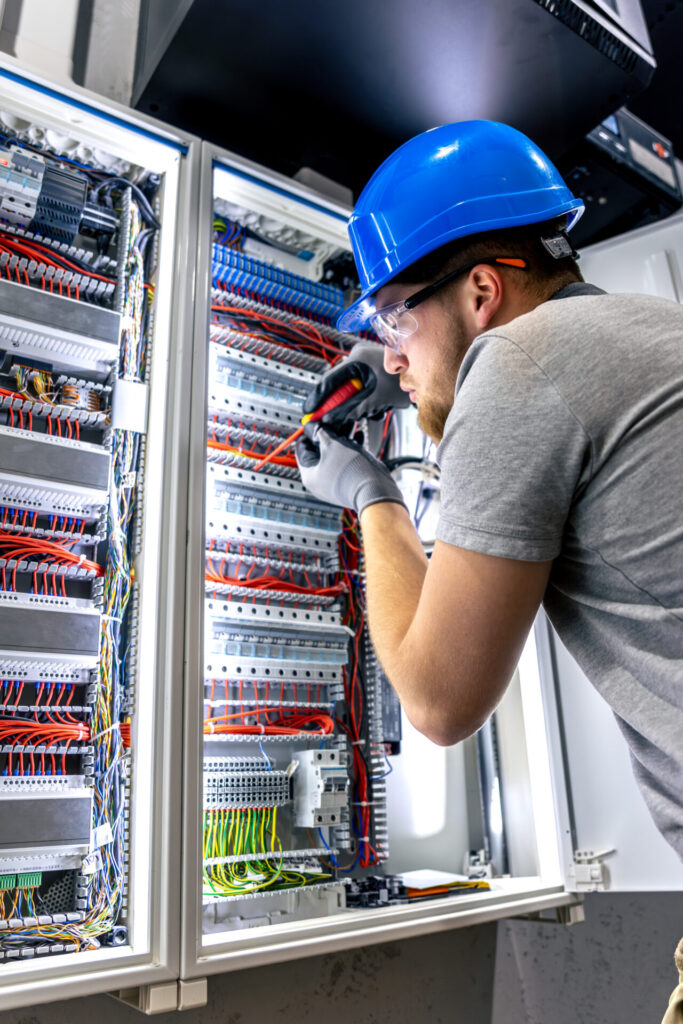
SMALL- AND LARGE-SCALE PLC PANELS, ONSITE INSTALLATION AND INTEGRATION
Small-Scale PLC Panels
- Small-scale PLC panels are compact control systems designed for simple automation tasks with limited I/O requirements.
- Compact Design: Fits into small enclosures.
- Limited I/O: Suitable for fewer sensors and actuators.
- Basic Control Logic: Handles straightforward operations like motor control, lighting, or temperature regulation.
- Cost-Effective: Ideal for budget-sensitive applications.
Large-Scale PLC Panels
- Large-scale PLC panels are robust systems used in complex industrial environments requiring extensive control and monitoring
- Modular Architecture: Multiple racks and I/O modules.
- High I/O Capacity: Supports hundreds or thousands of I/O points.
- Advanced Logic: Includes PID control, sequencing, interlocks, and safety systems.
- Redundancy: Often includes redundant CPUs and power supplies for reliability
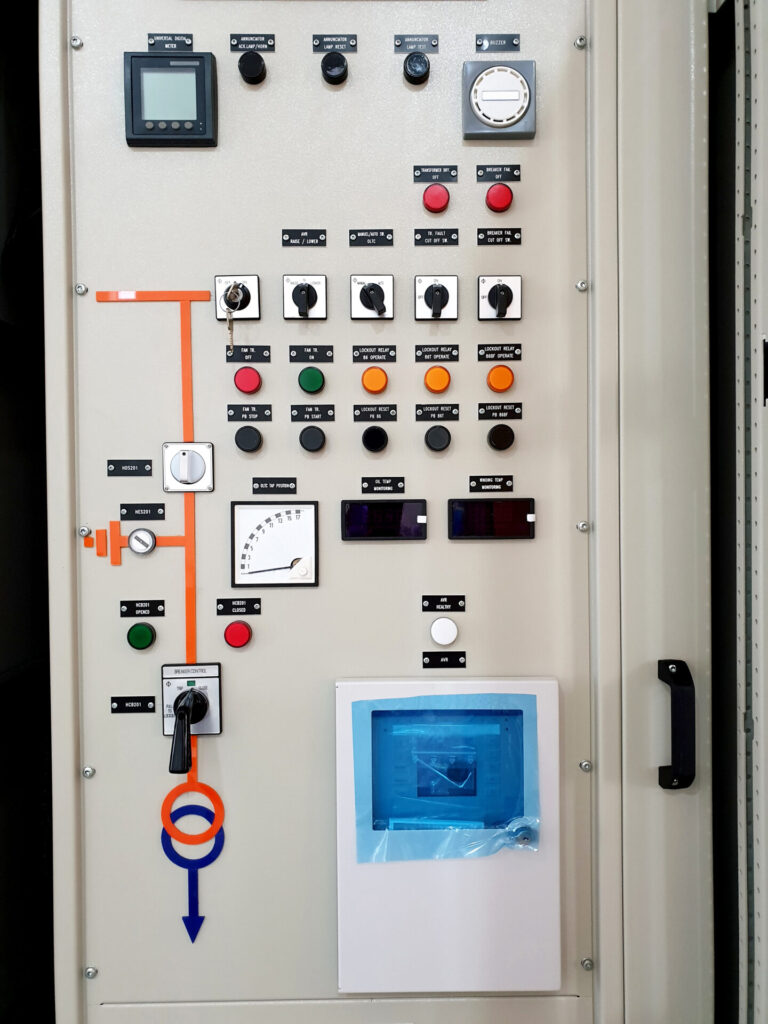
CONTROL PANEL DESIGN AND SUPPORT
Control Panel Design
- Control panel design involves planning and building electrical enclosures that house automation components like PLCs, relays, circuit breakers, power supplies, and communication devices. These panels serve as the central hub for controlling machinery and processes.
Key Elements of Design
- Functional Requirements: Identify input/output devices and control logic
- Component Selection: 1. PLCs, HMIs, contactors, relays, VFDs, power supplies, terminal blocks, etc. 2. Choose components based on voltage, current, and environmental conditions.
- Panel Layout: 1. Optimize space for accessibility, cooling, and safety. 2. Separate power and control wiring to reduce interference.
- Wiring & Schematics: 1. Create detailed electrical drawings using CAD tools. 2. Include wire numbers, terminal labels, and cable routing.
- Safety & Standards: 1. Comply with standards like IEC, UL, NEC, and ISO. 2. Include emergency stops, fuses, and circuit protection.
Control Panel Support:
Key Support Activities
- Installation Assistance
- Commissioning
- Troubleshooting
- Upgrades & Modifications
- Preventive Maintenance
- Remote Support
- Training
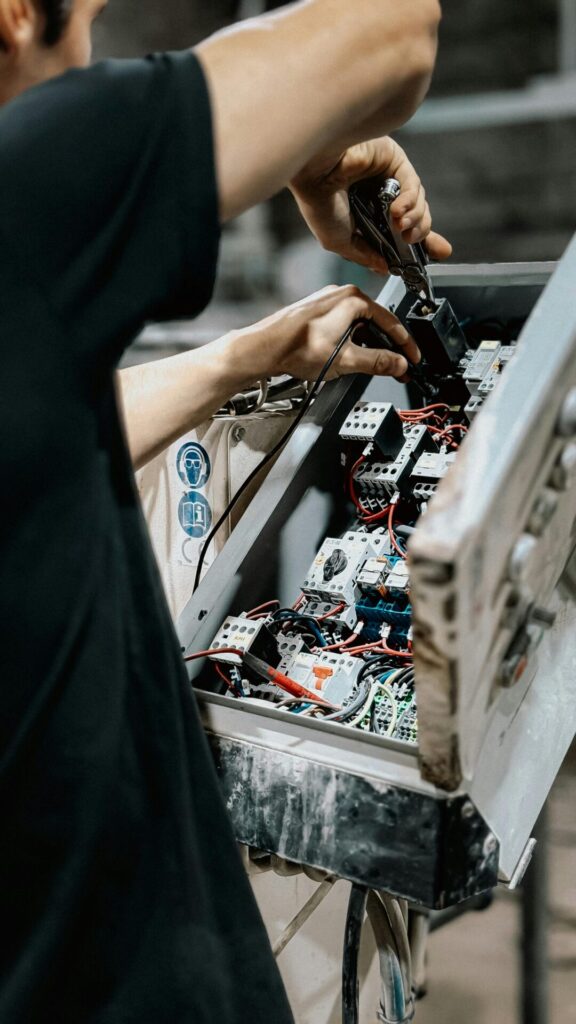
TRAINING OFFERING FOR INDUSTRIAL AUTOMATION SYSTEMS
Training Offerings for Industrial Automation Systems
- Industrial automation training equips engineers, technicians, and operators with the skills needed to design, operate, and maintain automated systems in manufacturing, energy, and infrastructure sectors
Core Training Areas
PLC Programming & Troubleshooting
- Ladder Logic, Function Block Diagram, Structured Text
- Hands-on programming with brands like Siemens, Allen-Bradley, Schneider
- Fault diagnosis and debugging techniques
SCADA & HMI Systems
- Configuration of SCADA platforms (e.g., Wonderware, WinCC, Ignition)
- Designing HMI screens and alarm systems
- Data logging and reporting
DCS Systems
- Architecture and configuration of Distributed Control Systems
- Process control strategies and loop tuning
- Integration with field instruments
Industrial Networking & Protocols
- Ethernet/IP, Modbus, PROFINET, OPC UA
- Network topology design and troubleshooting
- Cybersecurity in industrial networks
Instrumentation & Field Devices
- Calibration and configuration of sensors, transmitters, actuators
- Signal types (analog, digital, 4-20mA, RTD, etc.)
- Loop checking and diagnostics
Control Panel Design & Wiring
- Electrical schematics and panel layout
- Component selection and safety standards
- Hands-on wiring and testing
System Integration & Commissioning
- End-to-end integration of PLC, SCADA, and field devices
- FAT (Factory Acceptance Testing) and SAT (Site Acceptance Testing)
- Documentation and handover procedures
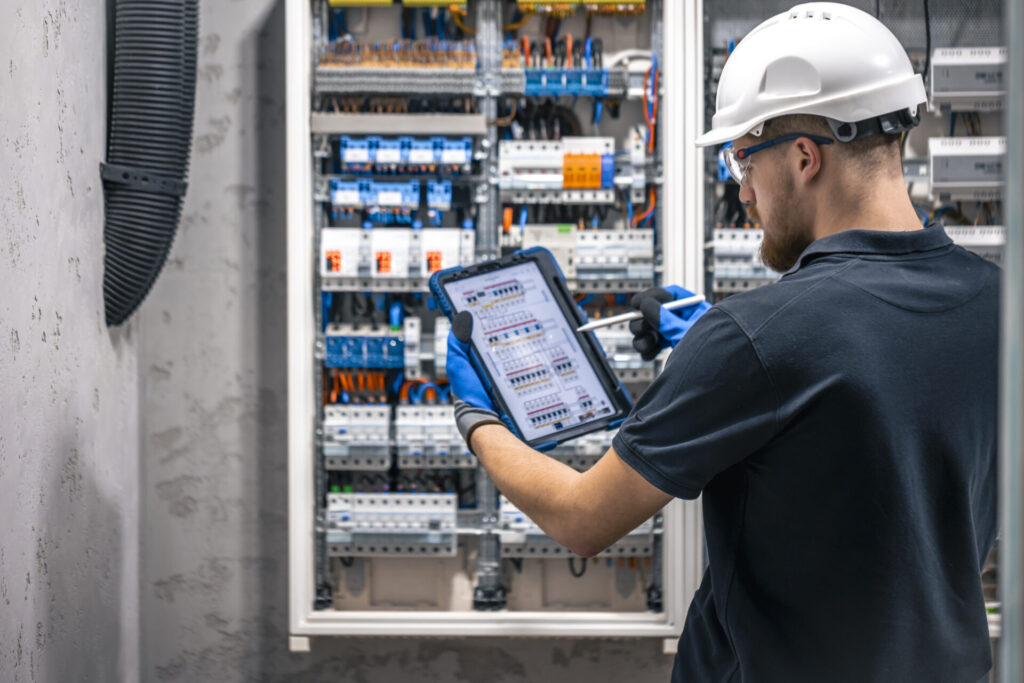
TRAINING FOMATS
- Classroom Training: Instructor-led sessions with theory and practical labs.
- Online Courses: Self-paced or live virtual classes with simulations.
- Onsite Training: Customized sessions at client facilities for real-world systems
- Workshops & Bootcamps: Intensive hands-on programs for rapid skill development.
- Certification Programs: Vendor-specific (e.g., Siemens Certified Programmer) or general automation certifications

